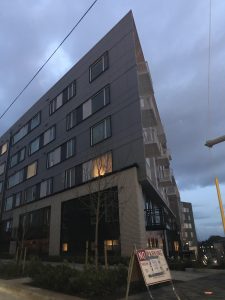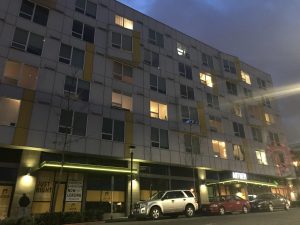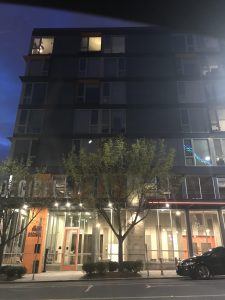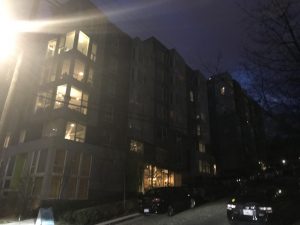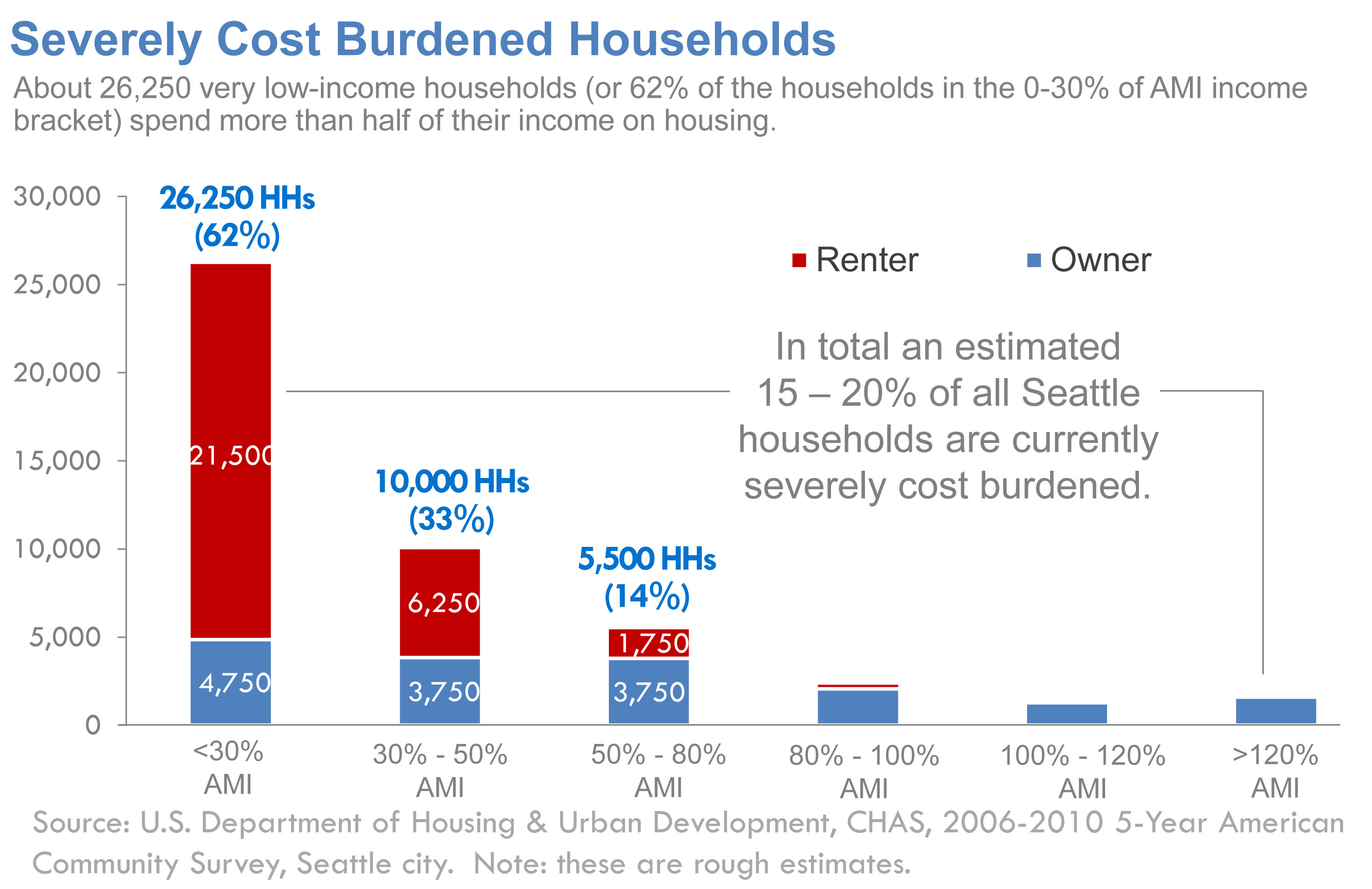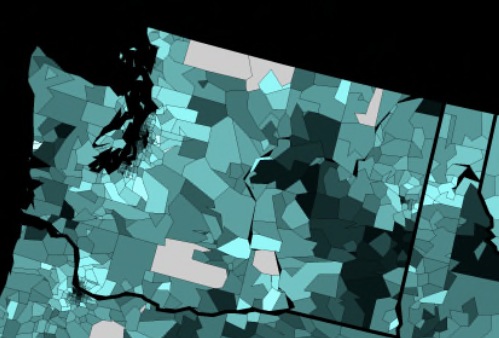Housing Trust Fund: Department of Commerce on the Defensive
I’ve been told that “lots of people are mad” about my criticism of how the non-profit housing industrial complex operates. But almost never does anyone engage the criticism directly; one common theme I’ve heard from the proponents of the status quo is “it doesn’t work that way.” I’d put a recent email from the Department of Commerce in that category. Obviously we’ve got their attention. Oddly, this email simply confirms what I’ve been saying, that the process of Housing Trust Fund allocation is a political process that results in more money for urban areas represented by Democrats than rural areas. The suggestion here by the Department of Commerce is also bizarre: don’t look at the 8 years of data, just ignore that. Again, “it doesn’t work that way.”
The numbers don’t lie: the poorest parts of the state with the fewest housing options and oldest housing stock are not getting enough resources while poorly governed Seattle is burning through subsidies. I pointed this out in a quick response citing census data that confirms this. But here is their whole email below. Tomorrow I’ll post some ideas about how to reform the Housing Trust Fund that would take allocation out of the bureaucracy at Commerce and more fairly distribute it.
April 4, 2018
Housing Trust Fund Stakeholders,
The Washington State Housing Trust Fund is dedicated to strengthening communities throughout the entirety of our state by helping them create and maintain affordable housing. Recent emails and blogs, which many of you have seen, raise questions about how projects are selected for funding, with some suggesting rural communities are not getting their fair share of state dollars.
We want to set the record straight by providing current information about how the Trust Fund works.
Housing Trust Fund (HTF) dollars support a wide range of projects serving a diverse array of low-income populations. While projects can serve people with incomes up to 80 percent of Area Median Income (AMI), the majority of projects serve households with special needs and incomes below 30 percent of AMI. Populations served include, but are not limited to:
- Homeless families
- Seniors
- Farmworkers
- People with chronic mental illness or developmental disabilities.
Most market rate units do not provide housing for people with special housing and supportive service needs, making Trust Fund-supported projects crucial to meeting this need in communities all over the state.
The HTF distributes funding throughout Washington. Historically, at least 30 percent of our competitive funding goes to rural areas. Distribution in a typical competitive funding cycle looks like this:
- Approximately one third of our funding goes to rural areas
- One third to King County
- One third to non-rural, urban areas outside King County, like Spokane, Yakima, Tacoma and Everett.
Additionally, the state legislature often chooses to make appropriations to individual projects in the biennial budget and directs the HTF to administer them. These direct appropriations are sometimes a large portion of the total HTF appropriation. For example:
- During the 2011-13 and 2013-15 biennia almost all of the HTF projects were direct appropriations for specific projects funded through the capital budget and identified in LEAP (Legislative Evaluation and Accountability Program) lists.
- Almost no funding was allocated for competitive funding cycles during these four years.
These directly appropriated projects are included in the total HTF portfolio and are administered by the HTF concurrent with competitively awarded projects. This makes HTF data and reports a combination of direct appropriated and competitive projects. The blended data cannot be specifically analyzed to draw conclusions about competitive awards.
Currently, the 2017-19 biennial budget includes 17 direct appropriation projects, making up $28 million of the $110 million total appropriation.
HTF awards are typically limited to no more than $3 million per project in order to ensure equitable distribution of funding statewide. There is simply more demand than funding available. The HTF must rely on other sources of funding to complete projects, otherwise most projects would be underfunded and would not materialize without other non-state contributions.
The Trust Fund historically has a solid return on investment. On average, $1 of state HTF investment is leveraged by $5 of investment from other sources, both private and public.
In rural areas, the HTF makes up a larger share of investment in projects. Costs to the state are much lower in urban areas where it is much easier to secure private investment and other funds. HTF is sometimes the only funder in a rural project.
Thank you for your continued work with the Housing Trust Fund. We appreciate your engagement.
For more information, please visit our website at http://www.commerce.wa.gov/building-infrastructure/housing/housing-trust-fund/
Or call us at: 360.725.2972
Durkan-Sawant Jobs Tax: What Does 750 Units of Housing Look Like?
The City’s version of Mandatory Inclusionary Zoning (MIZ) called Mandatory Housing Affordability (MHA) gives small increases in square footage for new development in exchange for very large fees, more risk, and extra construction costs. In many if not almost all cases there is no value exchange with the City’s program; the fees and risk will either make projects infeasible or be absorbed in the form of higher prices. The money? It gets funneled to non-profits that are spending more and more for less and less housing, like at 12th Avenue Arts which produced 88 units for $47 million or about $500,000 a unit, enough to buy each of those people their own house. Now comes the proposed $150 million tax on jobs supported by socialist Councilmember Kshama Sawant and that will inevitably supported by Mayor Durkan. Both ideas are inflationary, and grossly overestimate what can be produced with the money. The new tax claims it will produce 750 units a year for the $150 million. Let’s see what that looks like.
So the other night I decided to grab a Reach car and see if I could find 750 units that are in process or newly opened. There’s nothing special about where I went, I just sort of randomly drove around and followed what I know about areas that are getting built out. Here’s what I found.
Batik: Yesler Terrace
Developer: Vulcan
Units: 195
Start: 2016
Finish: Summer 2018
Anthem:103 12th Avenue
Developer: Spectrum
Units: 120 units
Start: 2014
Finish: 2018
Decibel: 301 12th Avenue
Developer: Spectrum
Units: 75
Start: 2014
Finish: 2018
Reverb: 1023 E Alder Street
Developer: Spectrum
Units: 84 units
Start: 2014
Finish: 2018
East Union: 2220 E Union Street
Developer: Lake Union Partners
Units: 144
Start: 2014
Finish: 2018 (Under construction)

Liberty Bank:2320 E Union Street
Developer: Capitol Hill Housing
Units: 115
Start: 2015
Finish: 2018 (Under construction)

So let’s look at these based on what is easy to know. There are 6 projects for a total of 733 units or about 122 units in each building. The shortest production time is Batik which will likely make a 24 month turn around and the longest is probably East Union, although it is always hard to know when “start” really happens. Land may be tied up for awhile before permitting goes forward. I must say that for all the hassles associated with these projects, including some rezones and design review, the average time of about 3 and a half years.
Yes, there is a lot of production going on. From 2005 to 2015 the city saw about 5000 units permitted per year. Actual finished production, that is a building ready to occupy, is a different measure. Getting permits doesn’t mean built, it could mean another 2 years or longer depending on the site and other factors. I don’t know enough about the Liberty Bank building’s financing other than it got $1,000,000 from the Housing Trust Fund (HTF), the City’s housing levy, and some tax credits. The timeline is surprisingly fast and at a price tag of $30,299,658 or about $260,000 per unit also surprisingly cheap compared to 12th Avenue Arts. One wonders why the board of Capitol Hill Housing couldn’t just cite these numbers rather than threatening me with “next steps.” Weird.
Costs aside, my point here is that even an optimistic timeline of more than 3 years, it would take until sometime in 2021 to see the first units from the Durkan-Sawant jobs tax to open their doors. This would mean that 6 or 7 non-profits would have to wade into the land market, find land, assemble capital, get through permitting, and design review. This of course would be on top of all other production. And each of these projects would be exposed to the growing regime of regulatory overreach coming from the City’s permitting departments. And even if the ribbons were being cut sometime in 2021, it would only offer relief to 733 of the City’s estimated 26,250 cost burdened residents. It hardly puts a dent in the problem they’ve defined.
Building housing is an achingly slow process and is very risky. And it is very expensive. I doubt that the City will collect and distribute money very efficiently, and I doubt that non-profits will be able to find land and other funds to build 733 units per year. As I pointed out in yesterday’s post, real people are having real problems today. Three years is too long to wait. I think taxing jobs is a horrible idea. But if the the Mayor and Council are determined to make that mistake, then why spend so much time and money building units that won’t solve the problem for many households; why not just help people with rent?
Durkan-Sawant Jobs Tax: Why Doesn’t Left Support Cash Payments for Rent?
I love math; I can watch people doing it for hours. I’m not particularly all that smart but I do have access to a calculator and a spreadsheet and the internet. So here’s one dumb guy’s, philosopher math on the Sawant-Durkan tax on jobs that will likely pass in the weeks ahead.
According to the City’s really, old and getting older, sloppy data analysis here’s where we are as a city:
I say sloppy because anyone who as looked at US Census data will tell you it doesn’t have a narrative. It doesn’t fit any kind of story. For example, the Census will tell us about households that pay 30 percent or more of their monthly income on housing, but it doesn’t tell us how much, in dollars, those households spend each month. We don’t know that. There’s all kinds of ways to slice Census data to make a point. I do it myself. But it’s hazardous. I doubt the number here, of 26, 250 households. There really isn’t a count of exactly how many people how much rent and it’s always changing.
But let’s take it as a fact, even though it is old data. This data is still driving the relentless pursuit of Mandatory Inclusionary Zoning (MIZ) which the City calls Mandatory Housing Affordability (MHA). Here’s my stupid guy philosopher math on the City’s take on cost burden.
A household earning 30 percent of Area Median Income (AMI), which is about $74,000 a year, is making about $22,337 per year, or about $10.73 an hour, way below the current minimum wage. But let’s go with the sloppy City data anyway. That’s about $1,861 per month. A person making that amount of money should be paying about $558 per month. If that household is paying half their income in rent they’d be paying about $930 per month in rent or about $373 more than they should pay. I won’t even challenge this goofy way of measuring what’s affordable. Let’s go with it.
So there are 26,250 people and families out there wondering how will they pay April rent. According to the City, many of them are looking at a rent bill about about $1000 due on Thursday. For those families this is a real problem. These families do math too. I imagine a mom trying to get kids to sleep, then sitting at a table wondering, with a calculator, “How am I going to find $1000 by Friday?”
That’s reality. But let’s go back to City Hall again. So the supporters of a $150 million tax on jobs say they’ll build 750 housing units a year with the money they extort from local business. The people who do the math for the City already said, that there are 26,250 households that are paying half their pay check for rent. Assuming that about a week after all the money is collected from Sawant’s tax, and those units are somehow built, that would mean (and I’m just making this up like the City does) that the cost burdened households would drop from 26,250 to 25,500. Good for those 750 households that get into that housing.
I’ll intervene with a little reality here. Nobody can build 750 units of housing in 12 months in Seattle. It’s impossible. Not Vulcan. Not Holland. Not Greg Smith. Not Jesus. Really. That many units can’t be built by fiat, even if there were a billion dollars available. It would be miraculous. You can look at the forty plus reasons why on the list we’ve built of cost drivers. Land is scarce. Labor is expensive. And leverage? More sources of capital means more transaction costs and time.
Let’s go back to that mom at her table. She’s adding numbers too. She has medical costs, not big, but she gets the bills. She has tips from one of her jobs. She keeps those. Often, on a good night, she’ll put some of them aside. She is taking care of her child but also her sisters. Sometimes her sister helps, sometimes not. Maybe she’ll talk to the landlord. Maybe she’ll call the hospital where she took her daughter to the emergency room when she had an ear infection and ask for a little more time. She has a calculator too. Who should she pay? The rent is due soon, it’s $930.
What if we went with Mayor Durkan and Councilmember Sawant’s tax starting now? What if business paid for their sins of making profits and creating jobs. What if we had $150 million dollars?
Let’s imagine that woman opening up an envelope from the City of Seattle and it offers help. All she has to do is send in her pay stubs from her job and the bill for rent. Download an app, the letter says, and give the City a bank account and a routing number and the City will pay your rent. She’s rubbing her eyes. Is this for real?
It must be a scam. She makes some calls. Others got the letter. Some people even got the money. How, she wonders. This doesn’t make sense. But she does it. She takes a picture of her pay check, a rent bill, and a check from her account. It’s late. She goes to sleep. It is a fitful sleep. She hasn’t slept well in a long time. She wakes up as light is streaking the skies. The kids are ok. She can’t help but look at her phone. She logs into her bank account.
There is a credit of $373.30 from the City of Seattle.
I must be dreaming, she thinks.
No, it’s real.
Let’s go back to the math.
Let’s say we paid each of the cost burdened households $373 a month. That would be a cost to the City and payers of the tax of $9,791,250. For 12 months, that would be $117,495,000, about $33 million less than Sawant has asked for.
Think about it. All across the city, families would get a reprieve. They’d get real help. They’d suddenly have a few dollars extra to save, to pay student debt, to finish paying off that loan.
It’s pretty clear, help thousands of families now, or pour cash into a system that, at best, promises a unit about 5 years from now.
So do the math. Check your conscience. The answer is easy.
Housing Trust Fund: Rural Washington Has Older Housing Units
I’ve been looking at years of Housing Trust Fund (HTF) allocation data and have already pointed out that King County gobbles up a big share of the pie for very expensive construction projects even though rural Washington is relatively poorer and less well off, and has lower vacancy rates for rental housing. Now, after looking at more housing data I found that Washington’s rural counties also have older housing than much of the state. This is yet another reason to reform the HTF to give more resources to rural counties. The key date for looking at aging housing is 1978, the year the Residential Lead-Based Paint Hazard Reduction Act of 1992 mandating reporting of any lead contamination. The disclosure was intended to protect families from exposure to lead from paint, dust, and soil by requiring the disclosure of known information on lead-based paint and lead-based paint hazards before the sale or lease of most housing built before 1978. It doesn’t mean that all housing built before than has an issue, but it is a good indicator.
Let’s take a look.
This chart ranks Washington counties from the highest percentage of housing built before 1980 to the lowest from the United States Census (using the American Fact Finder tool). Rural counties have much more older housing built before 1980. King County has more older housing than the state average of about 50 percent, but all the counties on top of it are rural counties.
When we look at the chart I created earlier looking at the poorest counties by income and wages, here’s how their housing stock looks.
Whitman County is an interesting case since it is the location of Washington State University which accounts for the dominance of rental units. It looks like an error, since rental units exceed owner occupied units and in most of the state rental units represent about 30 to 40 percent of the units. It’s worth looking at that too. This table is ordered by percentage of renter occupied units, highest to lowest.
The housing data in the US Census can become an obsession, at least for me. But what it points to is that while King County does have a lot of renters and its housing stock is older than average, there are lots of rural counties with much older housing and a significant number of renters. Whitman and Kittitas might be dismissed because Pullman and Ellensburg respectively are college towns; but that means college students competing with locals for housing. Whitman County has a lower poverty rate (11.7 percent) than the state average of 12.7 percent, but still much higher than King County’s 6.7 percent.
As for the number of rental units, it’s something I need to dig deeper into. But Grant County, which has higher wages, over $15 per hour and didn’t make my poor county list, has a lot of renters as a percentage, 38.7 percent than the overall state average of 37.6 percent. Being an owner occupying a unit doesn’t necessarily mean wealth or even being above the poverty measure and being a renter doesn’t mean poverty. But in places like Grant County many of the renters are likely working in the agricultural industry.
My point here with this data is that when we look at all units in the state, rural Washington has older housing that is more likely to have lead problems that need to be rehabilitated. It’s also likely that with such old housing, many of these units are less energy efficient and use more energy to keep them warm in the winter and cost more for the occupants to maintain. I also have heard in my travels that there just isn’t very much money to save older housing, so it stays unsafe, occupied by people who make less money and have fewer resources for health care.
Some people in Seattle complain when old houses get knocked down, but while old houses might look nice from the outside they are often inefficient uses of land, allowing fewer people to live in that space and they are often full of hazards and expensive to heat and cool. It’s like your favorite sweater; there comes a point where it has to go no matter how much you love it. In rural parts of the state, Housing Trust Fund money could be used with greater efficiency to save and rehab some of these aging homes to keep families housed and safe.
The featured image is from a 2014 Washington Post Article mapping the oldest (darkest shades) to the newest (lighter shades) by county all over the country. I took a screen shot of Washington’s data.
Rise Seattle Podcast: Talking Seattle Housing, Culture, and Change
I had the opportunity to have a great conversation with Tyler Davis Jones and Phil Greely who turn conversations like ours into a podcast called Rise Seattle. Davis Jones is a Seattle based Real Estate Broker at Windermere Real Estate and originally from Nashville and moved to Seattle in 2012. Greely is a Seattle native with more than eight years experince as a real estate broker. Together they have put together a long format interview show that covers a variety of topics related to our changing city. It isn’t often that I get to sit down with people and have longer, more nuanced conversations about housing issues and my own history and perspective. We covered a lot of ground. Take a listen and subscribe to the podcast for more.


